There’s a steady stream of media reports on the work conducted by our researchers and academics throughout the year, but occasionally a story truly breaks new ground, capturing the imagination of our peers and the public alike.
Here is a list of just some of our top news stories of 2014, in no particular order:
Big History in the New York Times
Professor David Christian, Modern History
As the intellectual birthplace of Big History, the origins of the Big History Institute and Big History Project can be seen at Macquarie University in the work of Professor David Christian. Since capturing the interest of Bill Gates, the interdisciplinary approach to historical study has spread to schools, universities, TED talks, the Vivid festival and the History Channel. The New York Times wrote an extensive piece on how it all came about, followed by further coverage in The Times of London, the Australian Financial Review, and more.
Embalming study rewrites Egyptian history
Dr Jana Jones, Ancient History
As part of an international team, Dr Jana Jones discovered that the practice of mummifying dead bodies might have started 1500 years earlier than first thought. The revelation sparked a media frenzy. In fact, the ABC took such an interest that it was arranged for Jana to base herself at their Ultimo studios, so programs from around the country could interview her consecutively. Jana also boosted her profile in this discovery by writing media pieces for The Conversation and the Guardian.
The evolution of PMS
Professor Michael Gillings, Biological Sciences
Michael’s research paper Were there evolutionary advantages to premenstrual syndrome? was the trigger for vigorous debate online in news, social media, and a spot on Channel 10′s panel show The Project (see 31 min) via satellite.
Cochlear MEG
Associate Professor Blake Johnson, Professor Stephen Crain, from the ARC Centre of Excellence in Cognition and its Disorders (CCD)
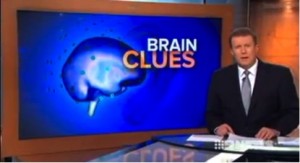 In June, Jamie-Lee Lewis (daughter of Rugby League legend Wally) flew from Brisbane to the Australian Hearing Hub, to kick off a brain scanning program for children with cochlear implants. Jamie-Lee, who is profoundly deaf herself, was the first participant in a CCD study in partnership with Hear and Say, using a new, world-first Cochlear Implant magnetoencephalography (CI MEG) machine. It was the first time researchers were able to separate CI “noise” from the data, allowing brain function measurement in children with CIs.
In June, Jamie-Lee Lewis (daughter of Rugby League legend Wally) flew from Brisbane to the Australian Hearing Hub, to kick off a brain scanning program for children with cochlear implants. Jamie-Lee, who is profoundly deaf herself, was the first participant in a CCD study in partnership with Hear and Say, using a new, world-first Cochlear Implant magnetoencephalography (CI MEG) machine. It was the first time researchers were able to separate CI “noise” from the data, allowing brain function measurement in children with CIs.
Coverage of her visit and the study launch appeared in the Sydney Morning Herald, WA Today, Health Canal, the Northern District Times, Channel 10 Eyewitness News, Channel 9 News Sydney, Channel 9 News Brisbane, Channel 9 News Darwin, WIN Hobart, SBS World News, and SKY News PVO Newshour.
Fish have feelings too
Associate Professor Culum Brown, Biological Sciences
Culum’s paper Fish intelligence, sentience and ethics saw heightened media interest after being posted on the self-proclaimed ‘front page of the internet’, social aggregation site Reddit.
It was quickly propelled to the front page of the website, exposing it to international media outlets including the BBC, NBC, and popular science networks like I F****** Love Science.
National security commentary
Adjunct Professor Clive Williams, Policing, Intelligence, and Counter Terrorism
Clive has maintained a very active profile in media discussions around topics of national security, acts of terrorism, and the risks around events such as the Brisbane G20.
Throughout the year spoke he has spoken across all mediums on a variety of topics including plans by Melbourne Airport and Qantas to introduce streamlined security checks, G20 Summit and Melbourne Cup security, threats posed by drones, and the movements of IS in Syria and Iraq.
One of his notable pieces included an appearance on ABC Four Corners to discuss the ‘Green on Blue’ killing of three Australian soldiers in Afghanistan.
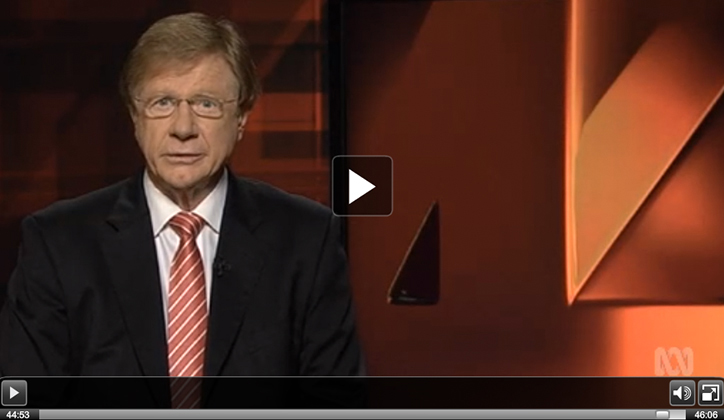
Newcastle lead levels research
Professor Mark Taylor and team, Environment and Geography
Lead by Mark, a team of Macquarie researchers received substantial coverage from Newcastle-based media following their investigation into soil contamination around a lead smelter site in Boolaroo, near Lake Macquarie. After the results indicated high levels of heavy metals in the soil, local radio stations and particularly the Newcastle Herald commissioned dozens of media stories investigating the public’s response to the findings, the local government’s intentions to address the concerns, the potential health impacts, and more.
The team have also continued their research into the ‘toxic playgrounds’ of Broken Hill and Townsville, and expanded their offerings with the Vegesafe soil testing initiative, with significant media interest in these projects as well.
Yeast 2.0
Deputy Vice Chancellor (Research) Professor Sakkie Pretorius, Professor Ian Paulsen, Professor Nikki Packer from Chemistry and Biomolecular Sciences,
In May, the launch of a new international collaborative project to develop the world’s first synthetic version of a complex living organism, yeast, captured the imagination of news media. Coverage of the project appeared in a wide variety of media including the Australian, Sydney Morning Herald, Business Insider, News.com.au, and the Daily Telegraph and NineMSN.
Sakkie appeared on Channel 10′s The Project to discuss Macquarie’s involvement – to develop one of the 16 chromosomes needed to make the synthetic yeast by 2017, and contributed the piece “Making ‘designer genes’ from scratch begins with yeast” to The Conversation.
Climate ‘windows’ allowed Polynesian migration
Associate Professor Ian Goodwin, Environment and Geography
A research project that spanned the Pacific Ocean attracted media interest from both Australian and New Zealand newsrooms. Ian’s study found that between 800 AD and 1600 AD the changing climate allowed Polynesian communities to migrate across the Pacific Ocean. In Australia, coverage appeared in the Australian, Australian Geographic, and ABC Science, but further international coverage also appeared in ABC Radio Radio New Zealand, the New Zealand Herald New Scientist, and the International Business Times among others.
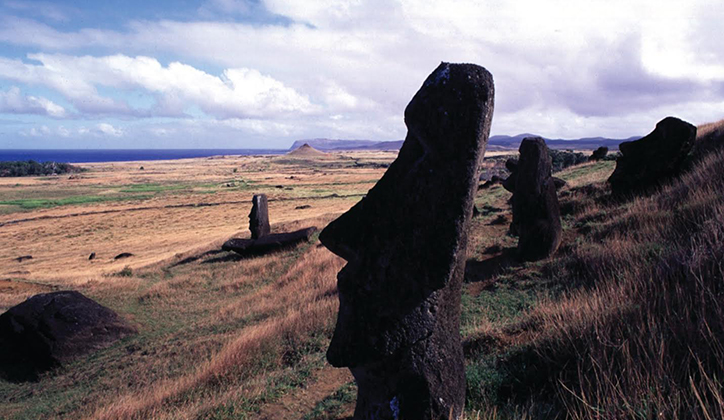
Professor Ray Markey, Department of Marketing and Management
Professor Ray Markey has provided media comment throughout the year in his area of expertise: Australian workplaces. A study he was involved in that found Australian workplaces have more work to do to reduce carbon emissions received coverage in the Canberra Times, Business Environment News Workplace Daily, and Yahoo! News.
He spoke onABC Radio to discuss findings and implications, which resulted in nationwide syndicated coverage. Professor Ray Markey has also contributed regularly to The Conversation, including the piece “Labor will be making a mistake if it simply divorces the unions“.
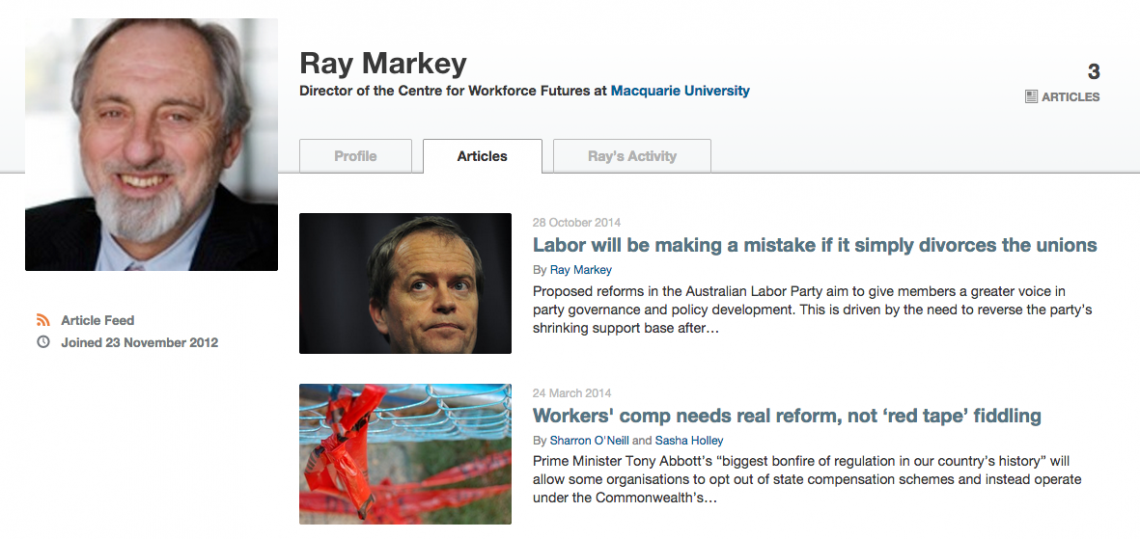
Sign up to our daily media report to get regular updates directly to your inbox.
Got a story to share in 2015? Contact the media and communications team ahead of time on (02 9850 6766, or communications@mq.edu.au.


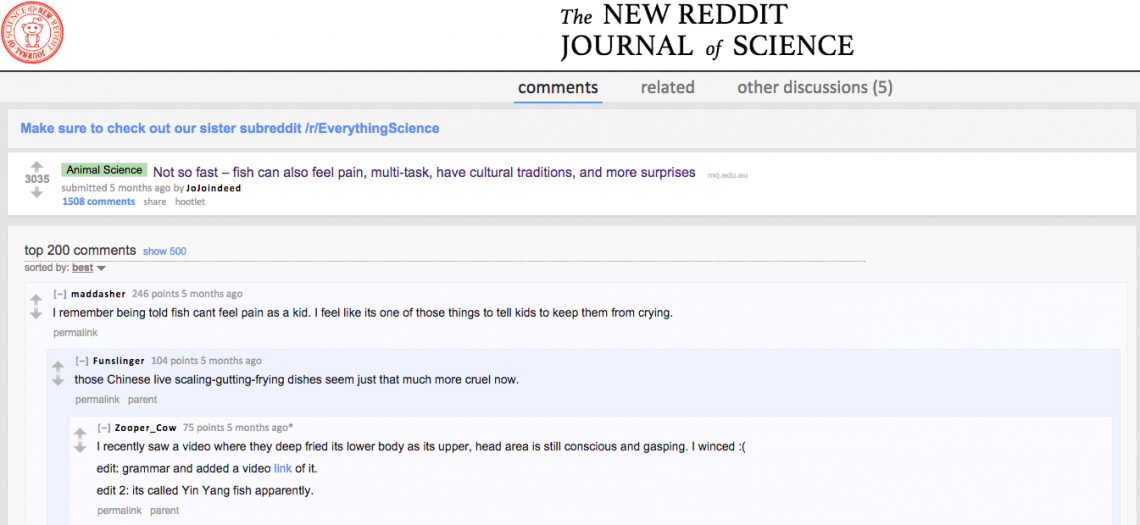
![The worldwide team involved with Yeast 2.0 has to synthesise 15 chromosomes to generate the first fully synthetic yeast by 2017. [Inset] Deputy Vice-chancellor (Research) Professor Sakkie Pretorius and Laboratory Manager (Synthetic Biology) Dr Natalie Curach.](https://www.mq.edu.au/thisweek/archives/wp-content/uploads/2014/09/Bioplatforms_partnership_FEATURE.jpg)